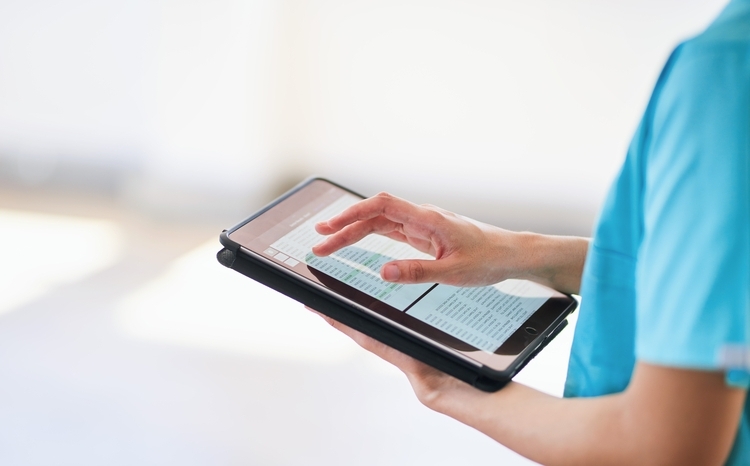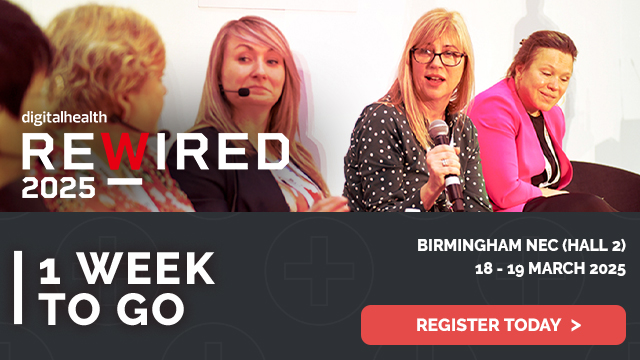It’s all about access
- 17 July 2007
 Previously known as CAS Ltd, created from a consortium of three firms, the company was re-launched last year as Clinical Solutions after CAS Ltd was bought out by a consortium of private investment firms in 2005.
Previously known as CAS Ltd, created from a consortium of three firms, the company was re-launched last year as Clinical Solutions after CAS Ltd was bought out by a consortium of private investment firms in 2005.
The firm remains best known for providing the call centre decision support software – together with the embedded clinical content – behind NHS Direct, the 24-hour telephone and web health advice service serving England.
The Clinical Solutions software is also used by NHS 24 in Scotland and the Welsh NHS, together with many GP out-of-hours service providers. “In addition, a tailored version of the product is operating in 40 NHS walk-in centres,” says Baker
In total over 25m calls have now been handled through Clinical Solutions’ clinical call centre software and associated algorithms.
Portugal follows NHS Direct
After enjoying success in the UK the company is now growing internationally. In March it had signed a deal with the Portuguese health service to use its clinical call centre in a national telephone advice service. “We’re now translating all our algorithms and scripts into Portuguese,” said Baker.
Describing the strategy being pursued by Clinical Solutions Baker says: “We’ve moved over the last few years from supplying telephone triage systems to focus on unscheduled care”.
Such unscheduled care includes telephone care, out-of-hours centres and A+E departments. “This now includes web-based tools for patient information such as ‘where do I find a 24-hour pharmacy?’”, explained Baker.
The aim of the company, he says, is to provide the means that make it possible to give citizens and patients a consistent experience of health services however they access them. “It’s about providing a front end so that patients are treated in a similar way whatever their point of contact with the healthcare system: pharmacist, GP, call centre or hospital A+E department. Our aim is to provide a consistent method of access to care," says Baker.
Linking to NHS Direct to NPfIT
To achieve this in England will require NHS Direct software and systems to be much more tightly integrated with those of the National Programme for IT, so for instance a patient call to NHS Direct can, if the patient consents, be recorded on their summary care record, or their demographic details checked on the personal demographic service (PDS). One benefit is that their GP could automatically be notified of contacts
"One of the things we have to do is link into the spine PDS to capture the unique ID of patients," says Baker. He adds that this is already beginning to happen in Scotland with the Emergency Care Summary record in Scotland.
Asked when he thinks the link to NHS CRS will be in place Baker says: "I would be hopeful that this time next year we would have the linkages in place."
This will occur, he argues, within the wider context of a move to managed care, particularly for long-term conditions. "The future will be about case management rather than call management."
Bio-surveillance
In another key development Clinical Solutions has recently launched a new bio-surveillance tool that uses the data captured in health call centre consultations to track incidents, and provides the means for health services to respond to health emergencies – including pandemics and potentially terrorist incidents.
The bio-surveillance software, builds on Clinical Solution’s expertise in clinical call centre software and embedded knowledge, together with mining of the data built up from each contact, to provide a means of managing medical resources following an epidemic or pandemic outbreak of disease, or a large scale emergency.
The software uses the vast database of information captured from every call centre consultation, including name of patient, where they live, symptoms described, advice given and response. “The solution is based on beginning to dynamically analyse this wealth of data,” Baker explained.
Bio-Surveillance provides a series of algorithms which enables early detection, containment, real-time reporting and analysis of an outbreak. Delivered on a web-based platform, the system can be operated and updated in real time, by multiple users, at disparate locations – giving it great flexibility.
In addition to being designed to help health authorities manage public health crisis such as an Avian flu pandemic, the bio-surveillance tool can also be used for other outbreaks and even terrorist incidents, says Baker. One that the company modelled after last summer’s radiation poisoning and contamination incident in London is for Polonium 210.
Planning for Polonium 210
“NHS Direct had to respond to that outbreak, so we subsequently built the Polonium 210 script as a model to show them how the bio-surveillance tool could work.”
He told EHI that Clinical Solutions is currently talking to both NHS Direct and Department of Health about how it can help them better respond to such major incidents. “We’ve said that if they can tell us what their top 5, 10 or even 20 biggest potential risk scenarios or pandemics are we can start working on that.”
The bio-surveillance system has already been used in a major incident rehearsal, called project Cumpstone, carried out by the Australian government to see how the country would respond to an outbreak of avian flu.
“Our bio-surveillance system is based around responding to major outbreaks, where the challenge is to determine who is at risk or may be at risk. In an outbreak of avian flu many health professionals would be affected,” explained Baker. He said that because the tool links into Clinical Solution’s call centre triage software it allows appropriate responses – including advice on treatment – to be rapidly implemented.
Pandemic down under
The Australian simulation went right through from an Avian flu outbreak being detected, to the first cases breaking out right up to a full-blown pandemic. In the initial phases the system would detect and map the outbreak, people would be advised not to travel and people identified as needing treatment sent to hospitals.
In the pandemic scenario Baker said health call centres needed to be able to respond dynamically and operate on a distributed model. “Call centres would be hit the same as everything else, therefore they need to be operated from peoples homes.”
Part of the Cumpstone trial tested the algorithms and scripts that would be used, and ability to rapidly update and use them. “They need to have the latest knowledge of where treatment centres are and drug supply situation,” explained Baker.
As well as leading the UK market, and the recent contract win in Portugal, Baker says discussions are underway in Norway and Sweden to provide web-enabled access to health services to all citizens. Australasia and Asia remain other high priorities for future expansion.





